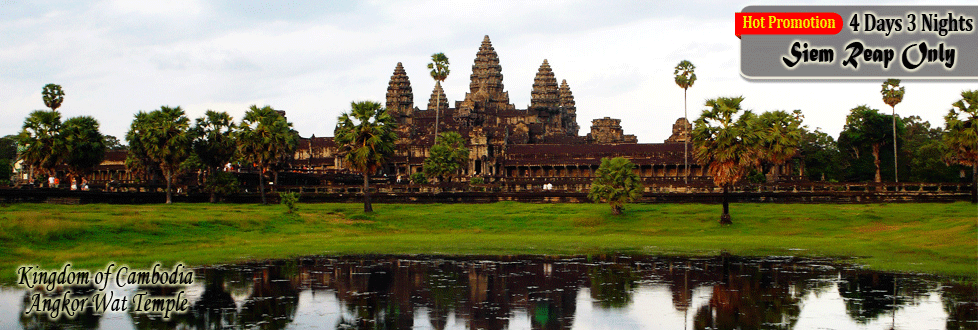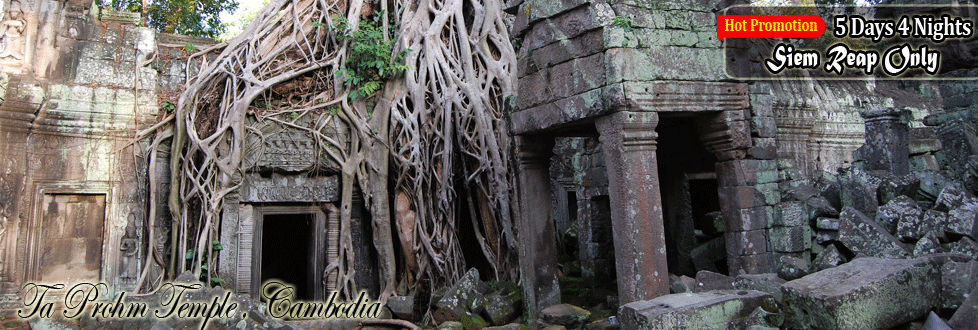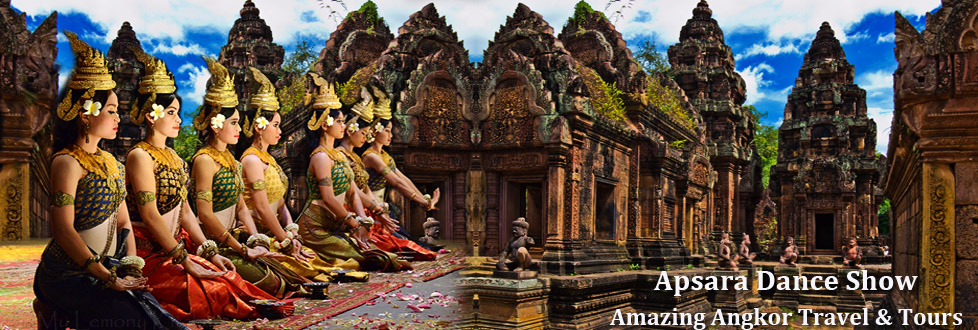|
Laos Information
Laos Tour Packages
Laos Hotels
Laos Attraction
|
Living in Harmony
One thing that does not change is the magic the old culture including the way of living of Lao people is the thing that the world tourists wish to see... FISH BREEDING SEASON Fish migration is an important event which happens in the breeding season, especially in the southern part of Laos. When the fish gather and move together. It is a good time for fishing. Catching fish is like a festival in rural areas. Fish are stored for long term eating are called "Padek" fermented fish. Padek can be presented as gifts for guests who come to the villages festivals or given to the poor. Answering the question "Why do fish move up?" that is, how do thw fish gaather together and move up the stream, the answer is they swim up side by side. When the sun sets, fish stop moving and sleep. This is also a good time to catch fish. To catch fish, people use fishing nets. There are different kinds of fish in the river and the times. Fish breed are different, depending on the type. Pa soi fish, for instance, move up in March every year. The size of this type of fish is as big as the tumb or two fingers. This fish id very popular in Attapeu Province. This year, There are lots of fish moving up too and some school boys are absent from school so that they are catch fish. It is not only boys, but adult are also absent from work. They enjoy catching fish, because it is only possible at this time of year. In Attapeu Province one type of fish is called "Pa Ern". This fish breeding season is in December, the beginning of winter. Pa Ern is very big, weight 20-30 kg or even more when full grown. Other types of fish are "Pa Wa" and "Pa Phone" these move up in wet season especially in September. When Pa Wa and Pa Phone move up, waves can be seen. People who live near the banks of rivers can hear the sounds of the waves. They move up for 3 days. In order to catch fish, people use their own boats to pull the big nets. Afull grown Pa Wa weights about 2 to 4 kg. Along the Xekong River Attapeu Province, at the beginning of raining season, when the first and the second rains arrive, the waters are dirty and muddy, so the fish migrate to other places to live or for breeding. This event is known that fish enjoy the new places and water. In March, the fish usually migrates Pa Pak. These fish like to gather in a group like a file of fish at night time. A lucky fisherman can catch them all. In Done Khong, Champasak province, plenty of fish are available because, the fish move from Tonlesap lake from Cambodia. In other provinces, the fish breeding season also occur. Any tourists who can grab an opportunity to see the fish breeding season will find it very enjoyable interesting. HERE IS NATURE! Whenever, I have a plan to tour to the rural area for nature sights seeing, my heart is brilliant. When the bus actually moves out from the city and I can see the nature. So, please guess how much my happiness is increased? The things to touch, are not the smoke, air pollution, terrible noise of engines, complicated lives, tricks and hard lives. Along the way, lives are calm. The sky is blue. Forests are green. Rice fields, streams and animals, all are looking pleasantly. Small houses located along the nature. Birds are flying lovely without destinations or relaxing. My close friends who toured in the same bus, sat quietly then later they looked happier. And finally, they expressed their happiness by words, smile, drinks and songs singing. These are lovely natural lives. Even it we hand the busy work, but we have to find out the ways for our entertainment by ourselves, referring to the times or methods to be used. It was quite strange and lovely images, when the bus stopped in the villages, many types of food and drink such as : steamed sticky rice, roasted chickens, birds, squirrels, drinks, bananas, maizes are ready to sale. It was the wonderful thing for the long distance travelers. Along the roads side, many types of cooked foods, such as : roasted chickens , fruits , bamboo sprouts, mushrooms, shells, fish, crabs and other forestry products are available for sale. In some places where the owners do not take guard, but there is no one to steal or take the goods away freely. All foods are new, fresh and low priced. Besides these the vendors are very honest. It is very keen to give them more money than its prices. No one can describe in detail of the happy lives in the fresh nature without touching it by oneself. However, these above should be proved or clarified by visitors who well understand about the beauty of nature. WATER...PESTLES RICE FOR ME! If travels up the northern areas of Laos, you will have seen a special lovely thing, that is the usage of waterpower to daily life of families in the ethnic minorities group. Even though a house is set alone, when at night that small house is lighted with one or two lamps without the sound of an engine running by waterpower. the size of machine for the smallest electric produce is only 100W for 2-3 lamps in a house, and enough for lighting in time that people come back from farm, cooking, dinner, relaxation sleeping or children may study. Many families are still using a streams for generating electricity for more pestle rice of people all day and night. Due to the geographical future dotted with mountains, those areas are full of streams. Villagers only dig a channel or make machine for electric produce is not expensive, and many people use it in Houaphan, Xiangkhoang and Phongsali provinces. Many people belief that "Water is an important natural resources for Lives", but in the northern areas of Laos "Water is a life, water is a close friend that it helps provide water, pestle rice and produce light". When need be, children will lift a basket of paddy then pour it into a call out: "Water... you help pestle rice for me ! ... I shall go to take mushrooms and bamboo shoots in forest". INFRONT OF NAMGNUM DAMP By dark mid night, fishmen who had dinner and slept too early, wake up, prepared themselves and went to the boat. Each boat has two fishmen and loaded 4 to 8 big lamps to hang them on the branches of the trees standing in the middle of the river. The lights of the big lamps motivate the fish to gather to see the light. The small fish that prefer the light very much is called Pakeo. Since the waves celled me on the shore, I wake up in the middle of the night to see the strange thing. I sat on the veranda of the guest house to look up to the sky and through everywhere, since it was my first time. It was February windy night. The big lamps move from the shores of the small island, while some stood still. They are looked like the stars on the water surface, I don't know how much the lamps are placed, since I could not count. If I am a bird flying up over Namgnum river of 8460 km2 , I will be able to count how many thousand of the lamps for fishing are. Uncle Gneuane who occupied this job for more than twenty years explained that the small fish catching by using the lights of the lamps can be taken for about half and hour, then the group of fish come to play and enjoy. The fish like the small insects and admire the lights. After that we use the light cover to make the area of the light smaller and the fish come more closer. We use the net to collect the fish every half and hour until the morning. Each fishmen can collect about 50 to 60 kilos per night. These reasons made the amount of the small fish decreased. How to catch the fish, Bountham PHOXAI, the former manager of Nam gnum Fish Catching Project described that in the past 10 or 20 years ago, more than 30 tons of fish can be caught per day, but at the present days, only 7 hundred kilos can be caught. Expectation, three or four folds of fish will be caught in September and October. Madame Khom a fishman's wife said that it was difficult to catch the fish. Previously, my family can catch 40 to 50 kilos or up to 100 kilos, but to date, if my family can catch 10 kilos is the highest amount. When the price of fish raise up, the price of the nets and fuels are also increased. One net costed 7 or 8 thousand kips previously, but its current price is 50 thousands kips per net. There is a need to buy the engine for breathing costed 5 million kips to dive into the deep area. This is the most important tool to be used. Referring to the estimation of the agency concerned that 30 percentage that Lao people consume fish. Previously, Namgnum was the kingdom of the fish. There were the great number of natural fish. At the present, even though the equipments and the method on how to catch the fish are well improved, but the number of fish caught are not enough, since the natural fish can not have free time for breeding. There is a need to send the small fish for feeding. More reservoirs, lakes and pond should be made for fishery. Doctors said fish meat have more protein and vitamin than other meat, since the fish provide little fat, easier to digest and have minerals to prevent cancers. Namgnum reservoir is not only to keep energy to generate the electricity power, but it is also serve as the most popular tourist site in Laos as well. Its catchments area is very wide. It is known as the small sea. The fishmen prefer to catch fish here and send to Vientiane markets. As we've known that only a few number of visitors spend the night here, but there are many tourists in the day time. They come here to have lunch and dinner. Those who already visited, wish to come here again. NONG NOK The sun was about to set, however it was time for the birds to fly back to their nesting area. Reaching Nong Nok the different types of birds circled in the air above several times before landing. Nong Nok is located in Bane Sivilay, left hand side of road No. 10 to Banekeune Zoo, linked by a feeder road about 10 kilometers. It was of great surprise gazing skywards and seeing different types of birds in many colours hovering over the lake. These birds live in a natural environment, the lake in which they feed in is full of fish, frogs and small crabs. As evening drew in, even more flocks of birds stretched their wings over the lake. The bamboo along the shores of the lake instantly changed to the colours of the birds as they landed on it. The wild ducks which had spent most of the day time resting and swimming were out to feed. I listened with interest while Mr.Kayson TANHAVONG, the team leader of this reservoir construction, the former chief of the village and Mr.Khammoune KEOPHIOLAVANH, the present chief of the village explained about the lake development for preservation and its new targets for improvement. Initially, the first goal is to keep water for animals in the dry season since this village is about five kilometers from Namgnum River. It was constructed in 1982 by various funds and contributing labour force of the villagers. The dykes are 370 meters in length and 3 meters high with 3 water gates. After being constructed, the catchments become even bigger. It is about 2,000 meters long covering an area of 64 hectares. the lake is stable both in the wet and dry season with many types of natural fish and fish breaded and released by the villagers. more goals are being set to increase the number of fish and birds in the area. There are also three preserved National forest surrounding the lake : Dongnonbor, Dongnonghai and Dongpakab, which creates an even more natural habitat for the birds. No regulations on the protection of the lake existed. however as the number of wildlife increased, the chief of the village drafted a letter of request describing an idea on how to protect the lake with reference to government degree on wildlife preservation and laws on environmental protection and was approved by the district governor. Since then the birds live naturally without fear of hunters and beauty can be seen through their natural behaviors due to the protection of laws. According to the new rules and regulations to protect the lake, it is forbidden to drain the lake. In addition a fence around the lake and two pavillion to stand guard, have been constructed. The villagers earned about 20 million kips in selling fish from the lake. At present, there are both local and foreigners who spend weekends here. If this area was improved with recreational facilities, natural paths and study sites for nature, tourism will definitely increase. Mr.John a German expert, walking in Phou Khao Khouay Forest Preservation area went from his office to see these groups of birds. Upon seeing them he said "Oh my God! I wonder if all the birds living in my country will come to marry the beautiful birds in this lovely lake". In this area there are about 10 different types of birds including: Nok Khon-gnou (oriental Darter), Nok Phetnam (Shelduck), Nok Phetka (white-winged Duck), Nok Xan (Rails), Nok Kaina, Nok Itoum (Watercock), Nok Chao, Nok Gnang (Egret), Nok Xai and Nok Kouark. If the villagers are able to provide better care and security for them more flocks of birds will arrive. The sun was about to set as our photographers crawled under the bamboo to get an even more interesting photo. Unfortunately it was time for us to leave, although we had not yet seen all of the different types of birds that would come later in the evening. Another time we would prefer to stay overnight.
|




.jpg)
.jpg)
.jpg)

.jpg)
.jpg)
.jpg)

.gif)

 How to Speak Laos
How to Speak Laos 


.png)
